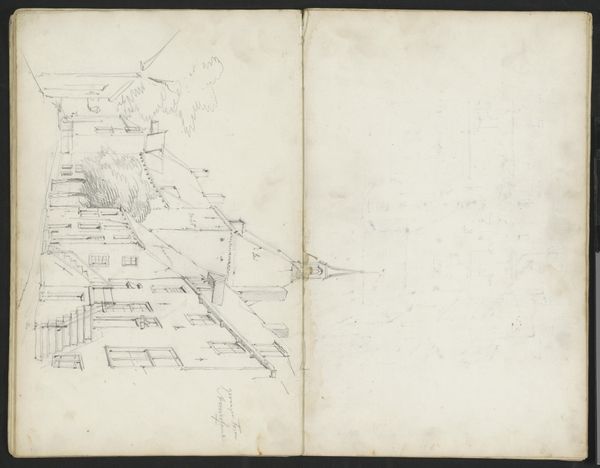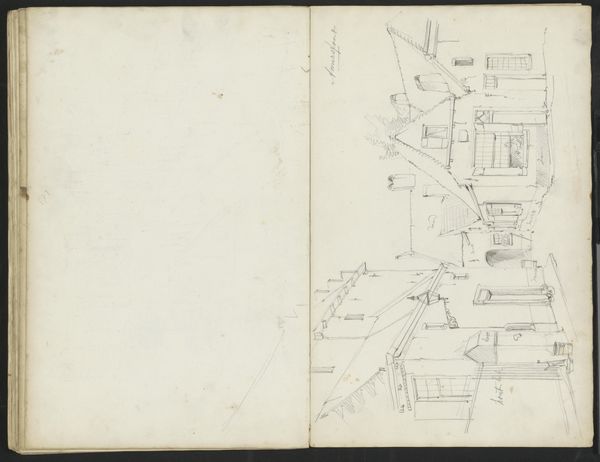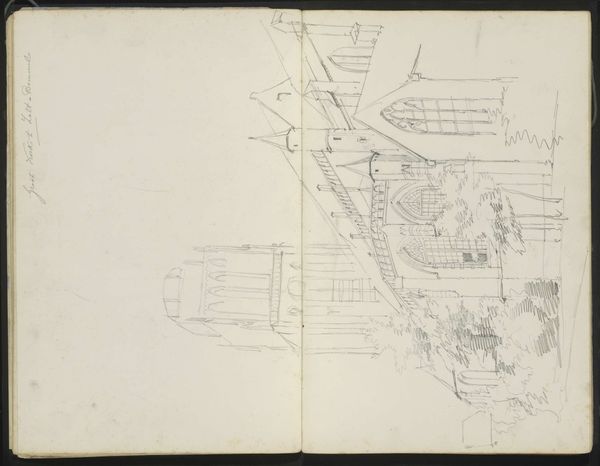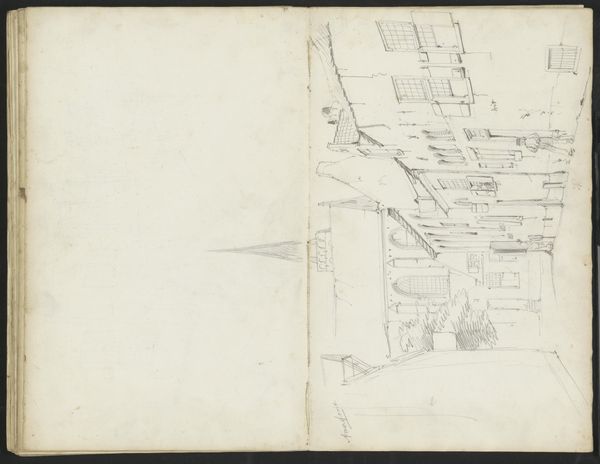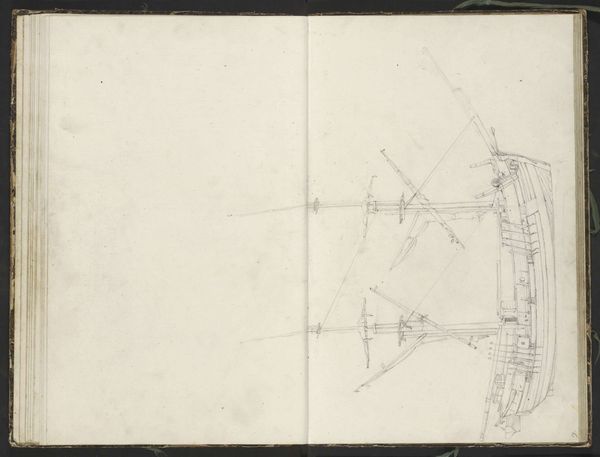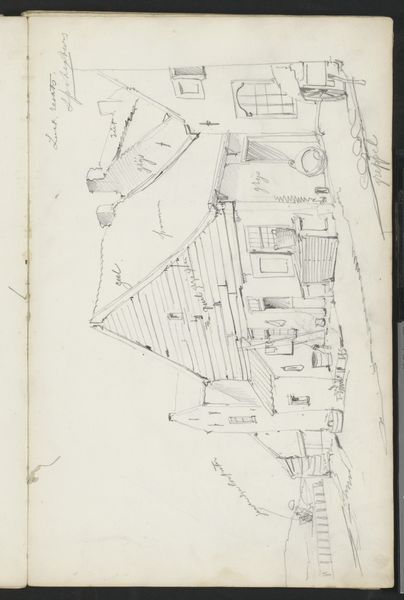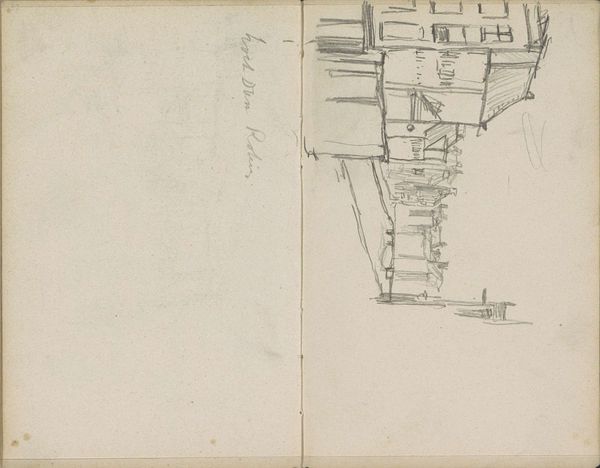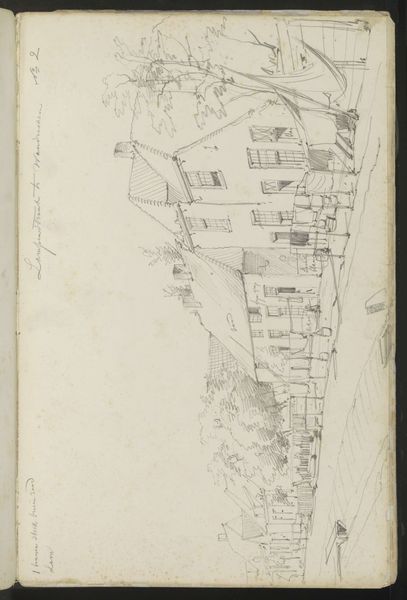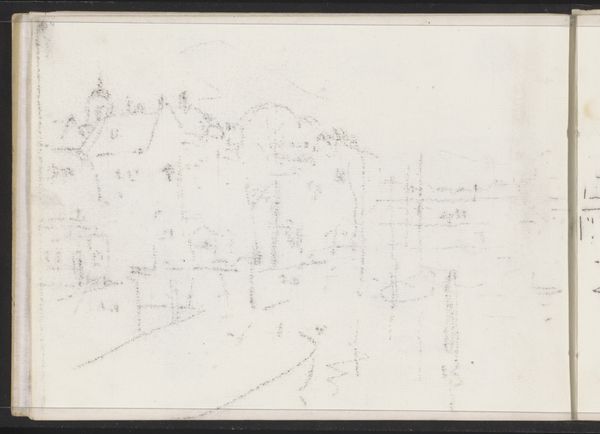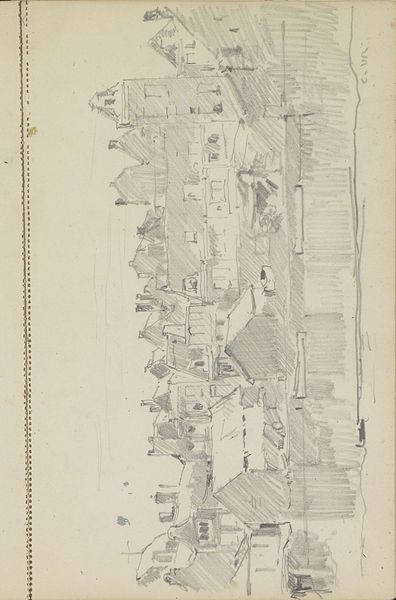
Onze-Lieve-Vrouwetoren gezien vanaf de Westsingel te Amersfoort 1849 - 1895
0:00
0:00
willemkoekkoek
Rijksmuseum
drawing, pencil
#
drawing
#
quirky sketch
#
pen sketch
#
sketch book
#
incomplete sketchy
#
hand drawn type
#
landscape
#
personal sketchbook
#
pen-ink sketch
#
pencil
#
pen work
#
sketchbook drawing
#
sketchbook art
#
realism
Copyright: Rijks Museum: Open Domain
Editor: Here we have Willem Koekkoek’s pencil and ink drawing, "Onze-Lieve-Vrouwetoren gezien vanaf de Westsingel te Amersfoort," placing its creation somewhere between 1849 and 1895. It feels almost like a hurried sketch, perhaps from a personal sketchbook. What draws your eye when you look at it? Curator: The immediacy of the medium, the pencil and ink, speaks volumes. Consider the ready availability and low cost of these materials during Koekkoek’s time. This accessibility democratizes the artistic process. It suggests that artmaking isn't confined to the elite with access to expensive oils and canvas but something integrated into daily observation, even travel. Look closely. Do you see how the sketch seems to emphasize the structure of the buildings, rather than the purely aesthetic elements? Editor: Yes, I do. It’s almost architectural in its precision, despite being a ‘sketch.’ It feels like a blueprint of a feeling. Curator: Precisely! And blueprints are, fundamentally, about labor and construction. Koekkoek's choice of media and the drawing's style redirect our gaze. We're no longer simply looking at a picturesque landscape but a record of material and human effort in the construction of this cityscape. Even the absence of human figures is telling, focusing attention on the built environment, on brick and mortar. What sort of cultural value is assigned to the art from the period? Editor: That’s a really interesting way to think about it. It flips my understanding from 'picturesque' to 'documentary'. Curator: Indeed. By choosing such humble materials, Koekkoek potentially subverts the traditional hierarchy of artistic mediums. It asks us to value the process, the act of recording and understanding the material world, rather than just the finished product as some object of detached beauty. I wonder if it makes a modern argument for considering architecture itself to be of significant artistry. Editor: So, seeing it as more than just a pretty picture. I never considered the implications of the medium itself so directly. Thanks! Curator: Of course! It highlights how materials and the methods of production are integral to understanding a work's deeper cultural meaning.
Comments
No comments
Be the first to comment and join the conversation on the ultimate creative platform.

